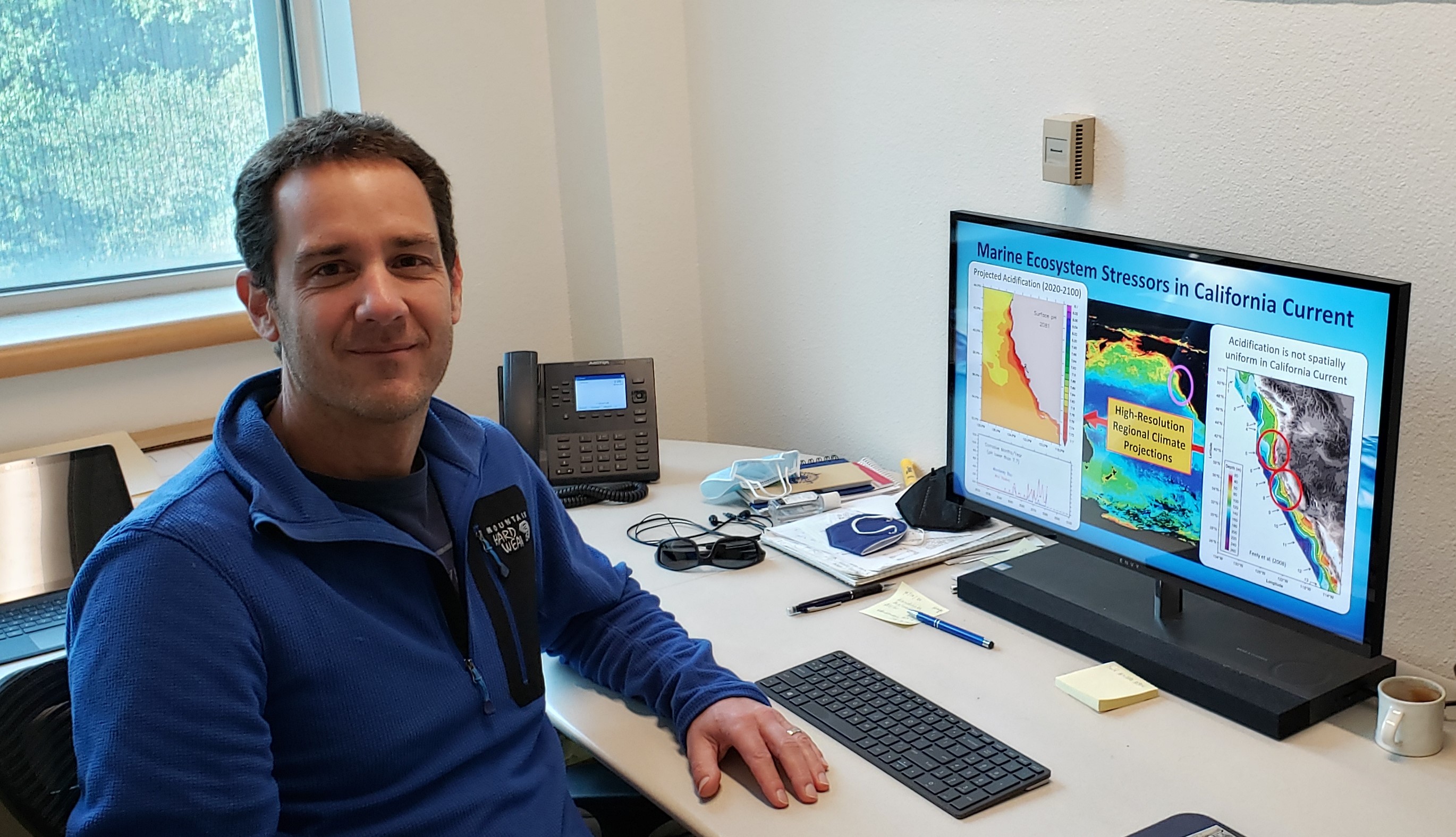Two UC Santa Cruz researchers will be delving deeper into coastal and climate resiliency efforts within California’s marine sanctuaries as part of two recent grants from the National Oceanic and Atmospheric Administration (NOAA).
Stephanie Brodie, an assistant project scientist with the Institute of Marine Sciences and a long-term affiliate of NOAA, received a three-year, $500,000 grant to work with the four California marine sanctuaries (Channel Islands, Monterey Bay, Cordell Banks, and Greater Farallones) to project climate impacts on marine predators and their prey across the West Coast. Brodie is the lead principal investigator, working with colleagues at the NOAA National Marine Fisheries Services and the Office of National Marine Sanctuaries.
Brodie’s research will primarily focus on protected species, whales, turtles, fish, sharks, and seabirds, and how they may be influenced by climate change as they move in and out of Sanctuaries as the ocean gets warmer.
“California’s marine sanctuaries need indicators of how climate change will impact them,” said Brodie. “We are looking at how species will shift their habitats in the future to prepare managers for change.”
Jerome Fiechter, an associate professor in the Ocean Sciences Department, also received a three-year $513,000 grant from NOAA working with the same four California sanctuaries. Fiechter’s research, however, uses numerical models to understand past, present, and future population changes of keystone species for California coastal ecosystems, such as krill and anchovy. Fiechter is the lead principal investigator, working with colleagues at NOAA and the Monterey Bay Aquarium Research Institute.
“We thought when conditions were warmer, sardines would be more prevalent, and when it’s colder, anchovies would be more prevalent,” said Fiechter. “But between 2014-16, the ocean was abnormally warm on the West Coast, and the anchovy population exploded. So we are building models to understand these ecosystem surprises and better predict them in the future.”
Brodie and Fiechter’s work also fits into the campus’s larger research initiative to address climate change in coastal regions in California and beyond. The Center for Coastal Climate Resilience was announced this summer and named a new director this month.




